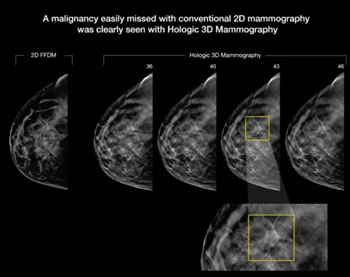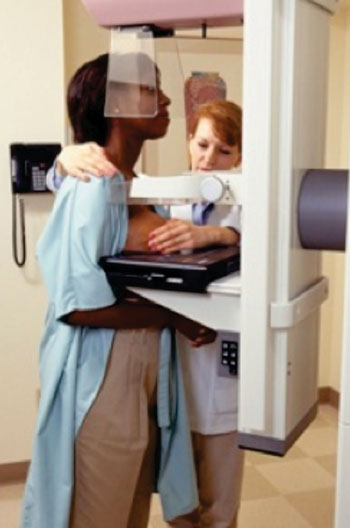Digital Mammography Combined with Tomosynthesis Optimizes Detection of Cancer in Dense Breasts
By MedImaging International staff writers
Posted on 22 Dec 2014
A new study supports the effectiveness of three-dimensional (3-D) mammography, which researchers found has the potential to considerably increase the rate of identifying cancer in women with dense breasts who are screened using the digital technology.Posted on 22 Dec 2014
Using digital mammography combined with tomosynthesis, which provides a 3-D view, researchers detected 80% of the 132 tumors in women with dense breasts, compared to 59% detection when using mammography alone. The study, which included more than 25,000 women, was presented December 2, 2014, in Chicago (IL, USA) at the annual meeting of the Radiological Society of North America (RSNA).
Breasts that are fibrous or have a lot of glandular tissue but little fatty tissue are considered dense, and are most likely to develop cancer, the researchers reported. Because of the density, cancer can be difficult to identify using standard mammograms. Other imaging systems, such as ultrasound and magnetic resonance imaging (MRI) scans, are used to detect breast cancer that cannot be visualized on mammograms; however, they have higher rates of false-positive findings that turn out not to be cancer. Such false-positive findings generate unnecessary biopsies and also raise the costs to patients, medical institutions and insurers, according to the researchers.
“Tomosynthesis could be regarded as an improvement of mammography and would be much easier than MRI or ultrasound to implement in organized screening programs,” stated Per Skaane, MD, PhD, from Oslo University Hospital (Norway), and lead author of the study. “So the intention of our study was to see if tomosynthesis really would significantly increase the cancer detection rate in a population-based mammography screening program.”
In the study, 257 tumors were detected using full-field digital mammography (FFDM) and a combination of FFDM and tomosynthesis. Of the 257 tumors, 211, or 82%, were detected with FFDM plus tomosynthesis, a significant improvement over the 163, or 63%, detected with FFDM by itself. “Our findings are extremely promising, showing an overall relative increase in the cancer detection rate of about 30%,” Dr. Skaane said. “Stratifying the results on invasive cancers only, the relative increase in cancer detection was about 40%.”
Moreover, not only did the use of tomosynthesis increase the rate of cancer detection in women with dense breasts, it also helped improve detection for women in the “fatty breast” category. The combination of tomosynthesis with FFDM bumped the cancer detection rate up to 84% from 68%.
3-D breast cancer imaging was first approved by the US Food and Drug Administration (FDA) in 2011. In a study published by the Journal of the American Medical Association (JAMA) in June 2014, researchers using data gathered from 13 US hospitals found that when using 3-D imaging, 16 fewer women out of 1,000 evaluated had to undergo tests compared to those receiving traditional imaging.
Related Links:
Oslo University Hospital
















